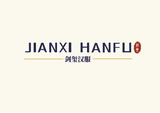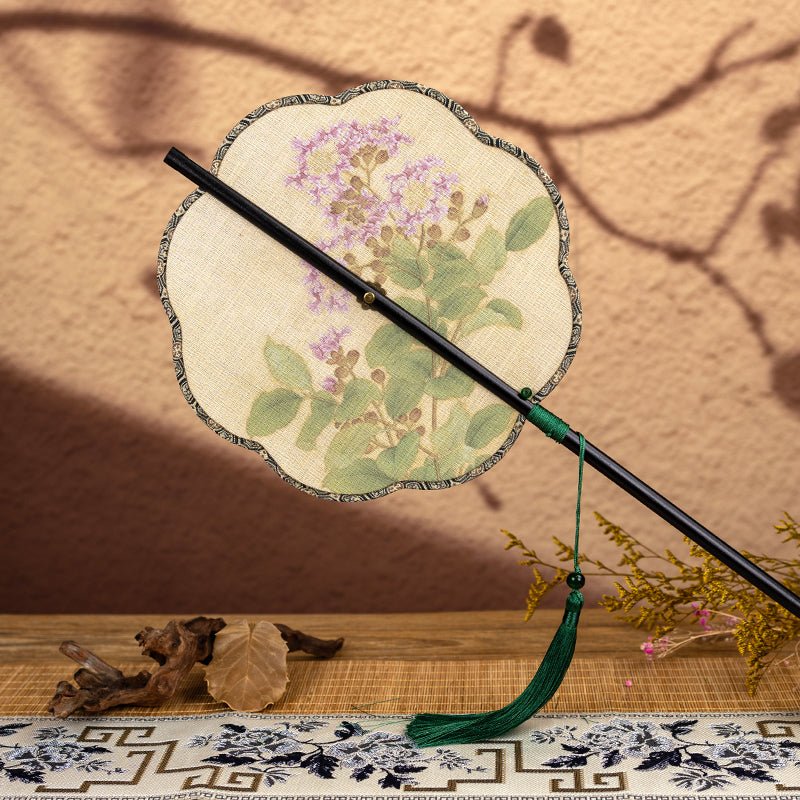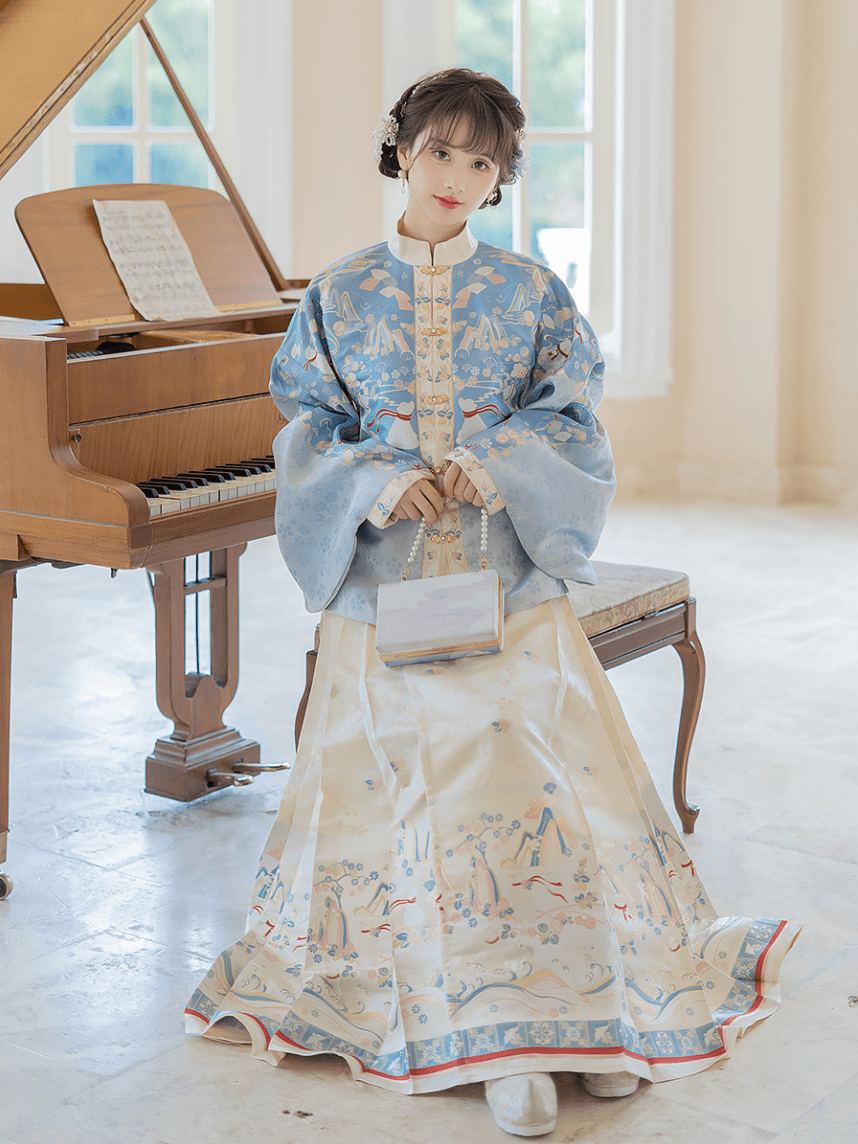Hey everyone, have you noticed something interesting? Compared to traditional hanfu, modern hanfu has quickly become popular among young people with its unique charm, becoming a typical phenomenon of the collision between traditional culture and modern fashion. The popularity of modern hanfu is no accident. As a practitioner in the hanfu industry, let me break down the five core reasons why modern hanfu has become so hot.
Traditional hanfu is beautiful, but its complex styles (like wide sleeves and multiple layers) make it hard to fit into modern life. Modern hanfu takes "improvement" as its core—while keeping iconic elements like Cross collar right lapel and ties, it optimizes the 版型 (silhouette):
a. Shorter lengths:Avoid 拖地 (floor-length drag). For example, improved Ming-style horse-face skirts are cut to calf length for easier daily movement.
b. Simplified structures: Modern Hanfu simplifies the traditional "three-layer dressing method" by introducing single-layer jacquard fabrics that are cool for summer.
c. Functional innovations: Add practical designs like pockets and invisible zippers, turning hanfu from "ceremonial clothing" into "daily commuter fashion."
I can really relate to this—Jianxi Hanfu’s improved Song Dynasty hanfu accounts for half of their website’s sales, far exceeding traditional styles. This proves the market’s acceptance of modern improvements.
From "niche hobby" to "universal fit," modern hanfu has broken down the barrier of being "exclusive to academic purists." It offers specialized categories for different groups:
a. Student-friendly tied hanfu: Young people love affordable modern Hanfu brands. For example, the Doukou series by the brand "Shanchi" uses a large amount of polyester fiber material while maintaining its design concept of Dunhuang Tang Dynasty-style restoration. This enables the brand's chest-length ruqun (robe and skirt sets) to balance Yanzhi (aesthetic appeal) and cost.
▲The Doukou series by the brand "Shanchi"
b. Office-friendly modern hanfu: Many modern hanfu brands now offer "han-element commuter wear." Take "Ta Yun Guan" (Treading Clouds Pavilion), which pairs Song-style short shirts with suit pants or long skirts—low-key cultural elegance that elevates workwear without compromising professionalism.
c. Unisex modern hanfu: Modern Hanfu Brands are developing loose-fitting, gender-neutral Tang-style round-collar robes, opening up new markets for broader acceptance.
▲ The picture is from the xingchen series of the modern Hanfu brand Hebiekongshan
d. Family matching sets: Products like "parent-child hanfu sets" that went viral on Taobao (selling over 10,000 units monthly) show how family-oriented designs are driving the modern hanfu movement.
A key reason for its popularity? Modern hanfu unlocks the "hanfu +" concept. Dressing logic is highly flexible—no longer limited to "head-to-toe tradition." It encourages mixing with modern clothing:
a、East-West fusion: For example, pairing horse-face skirts with tweed style or Western-style jackets, and creating a "cross-border trend" through detailed accessories like handbags, hats, boots, etc.
 ▲The Tao Zhi Yao Yao series horse-face skirts from the modern Hanfu brand Luoxiudongxiang
▲The Tao Zhi Yao Yao series horse-face skirts from the modern Hanfu brand Luoxiudongxiang
b、Outer han, inner modern: Layer a hanfu coat over a T-shirt or camisole for summer temperature control.
c、Modern accessories: Use baseball caps, necklaces, etc., to balance hanfu’s classical feel with modern aesthetics.
Social media data backs this: Douyin’s #汉服混搭 (#hanfumix) has over 5 billion views, with users sharing creative looks like "hanfu + JK fashion" or "hanfu + Lolita."
From "cultural display" a few years ago to "full-scenario coverage" today—traditional hanfu was often seen as "festival-only," but modern hanfu has integrated into daily life through scene-specific designs:
a、Daily commuting: Choose improved Song-style short-sleeved shirts with pleated skirts for office-friendly mobility.
 ▲Revamped Song Dynasty-style Hanfu beizi
▲Revamped Song Dynasty-style Hanfu beizi
b、Sports/leisure: "Han-element activewear" uses stretch fabrics, like cross-collared hoodies and drawstring pants for yoga, cycling, etc.
c、Formal occasions: Elaborate Ming Dynasty wedding dress or Tang Dynasty wide-sleeve robes are now top choices for post-95s couples’ Chinese-style wedding photos.
Young people’s "Oriental aesthetic" identity expression—against the backdrop of guochao (Chinese cultural tide) rising, modern hanfu has become a vehicle for
Gen Z to express cultural confidence:
a、Symbolic value: Wearing hanfu isn’t just about clothing; it’s an affirmation of "Oriental aesthetics."
b、Social currency: Hanfu acts as an "icebreaker" in offline 社交 (social settings), like cosplay events or guofeng music festivals, where modern hanfu wearers easily form identity circles.
c、Cultural export: International students use modern hanfu as a "Chinese calling card," wearing it at overseas graduations or cultural exhibitions to spark cross-cultural dialogue.
 ▲A graceful and poised Chinese girl
▲A graceful and poised Chinese girl
According to relevant data. 78% of post-95s believe "wearing modern hanfu is an innovative way to inherit traditional culture," not just retro imitation.
In the end, I think modern hanfu’s popularity boils down to "translating" traditional culture into something 现代人 (modern people) can embrace. From style tweaks to scenario expansion, its success hinges on one truth: For traditional culture to stay alive, it has to keep up with contemporary life.
Hanfu isn’t a museum artifact anymore—it’s a "moving" cultural symbol. Young people wear it to feel a connection to "Chinese aesthetics," while also letting it bridge the past and future as an open, trendy bridge. As designs and cultural storytelling evolve, who knows what else hanfu might achieve? Maybe one day, "Chinese style" will truly become a major current in global fashion.
 ▲The Tao Zhi Yao Yao series horse-face skirts from the modern Hanfu brand Luoxiudongxiang
▲The Tao Zhi Yao Yao series horse-face skirts from the modern Hanfu brand Luoxiudongxiang ▲Revamped Song Dynasty-style Hanfu beizi
▲Revamped Song Dynasty-style Hanfu beizi ▲A graceful and poised Chinese girl
▲A graceful and poised Chinese girl




